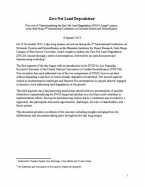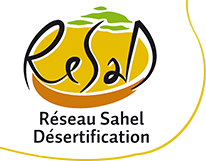Zero Net Land Degradation

Présentation du document
[Authors’summary: On 13 November 2012, a day-long session carried out during the 4th International Conference on Drylands, Deserts and Desertification at the Blaustein Institutes for Desert Research, Sede Boqer Campus of Ben-Gurion University, Israel, sought to address the Zero Net Land Degradation (ZNLD) concept through a series of presentations, followed by an open discussion and brainstorming workshop.
The first segment of the day began with an introduction to the ZNLD by Luc Gnacadja, Executive Secretary of the United Nations Convention to Combat Desertification (UNCCD). Two scientists then each addressed one of the two components of ZNLD: how to use land without degrading it and how to restore already degraded soil and land. The second segment looked at implementation challenges and featured five presentations by people directly engaged in intensive work addressing land degradation on the ground.
The third segment was a brainstorming session that started with two presentations of possible obstacles to operationalizing the ZNLD target and another on a tool that could contribute to implementation efforts. During the brainstorming session led by a moderator and recorded by a rapporteur, the participants discussed opportunities, challenges, the roles of stakeholders, and future actions.
This document presents a synthesis of the outcome, including insights emerging from the deliberations and discussions taking place throughout this day long session.]
Table of content:
- ZNLD Opportunities
- Setting a target
- Addressing an issue of global significance
- Addressing global food security through reducing degradation rate plus increasing restoration rate
- Contributing to streamlining and synergies, and empowering the local land users
- ZNLD Challenges
- Address food security not only by avoiding degradation but also through restoring already degraded land
- Monitoring and assessment
- The enabling environment
- Financial resources
- Awareness, motivation and empowerment
- Upscaling and joint bottom-up and top-down ZNLD implementation
- The way forward
- Pilot testing of ZNLD at the local, community level
- The UN, global scale track – Streamlining the ZNLD into a Sustainable Development Goal (SDG)
- The pre-2015 actions
- The Post-2015 actions
- The role of the UNCCD, the other Rio Conventions and relevant UN Agencies
- Recommendations
